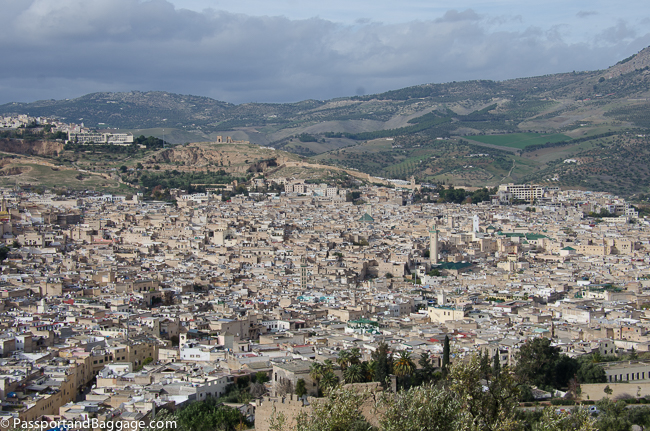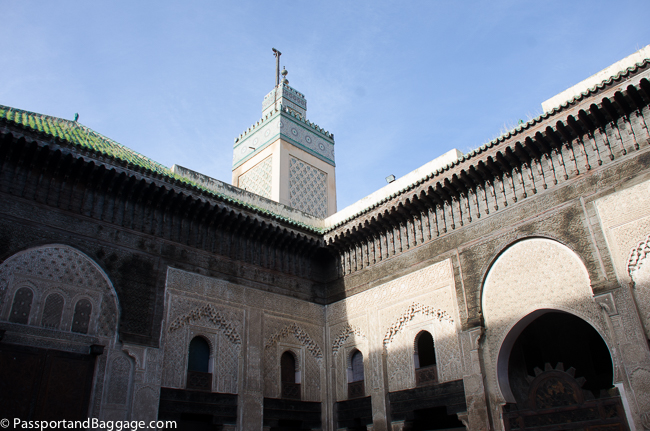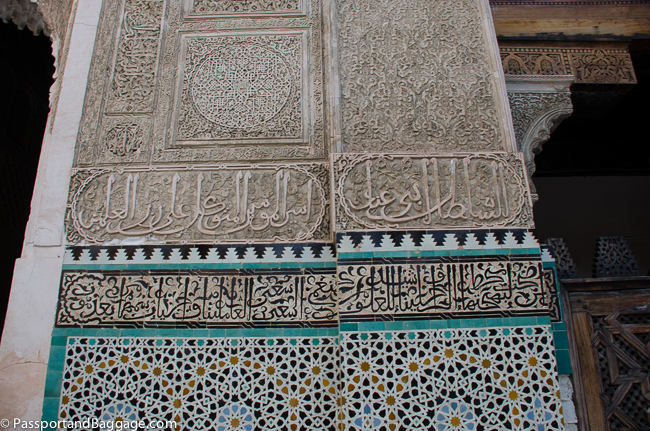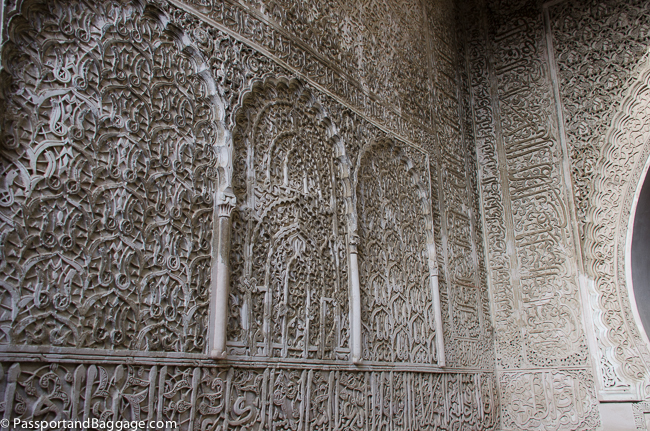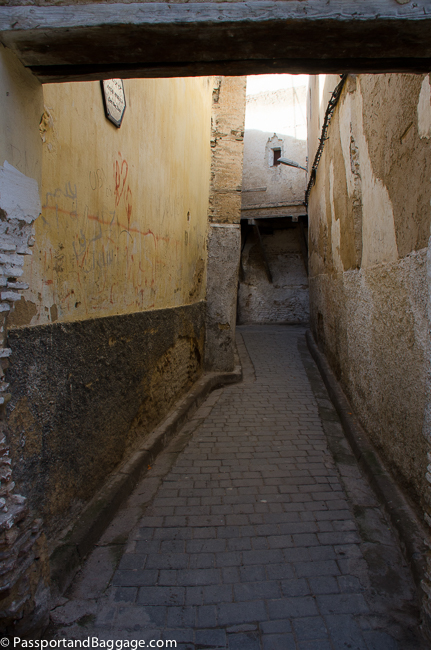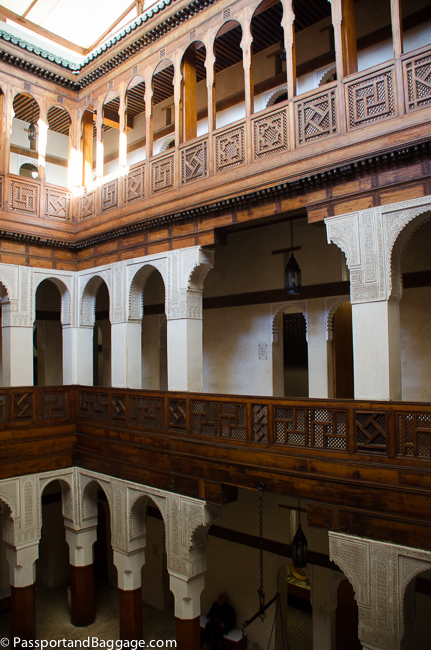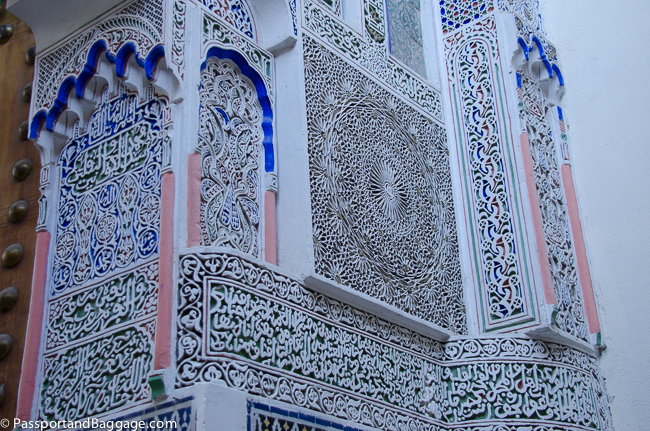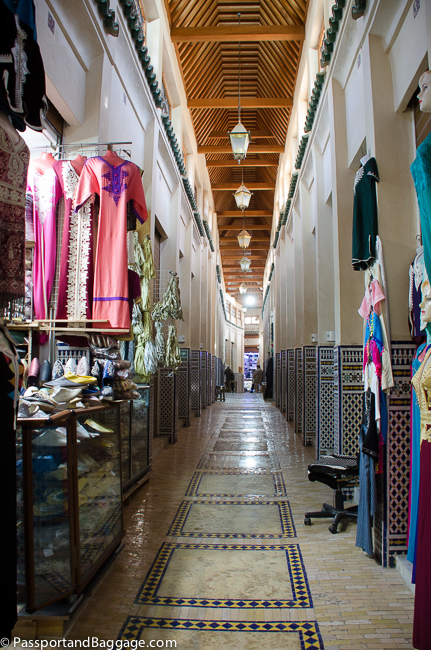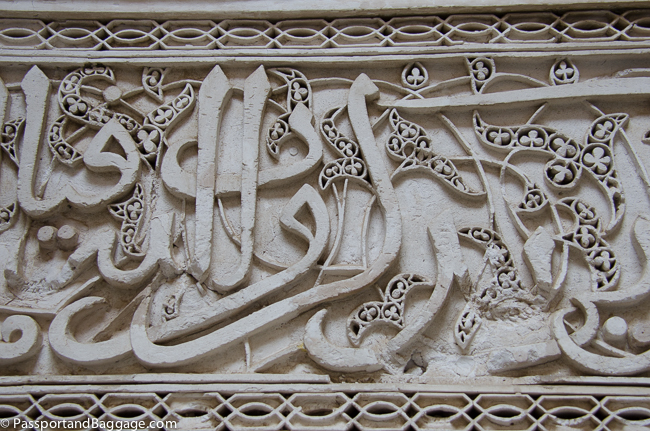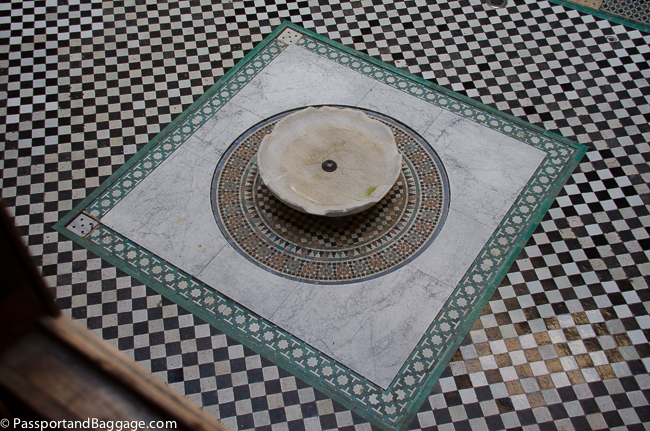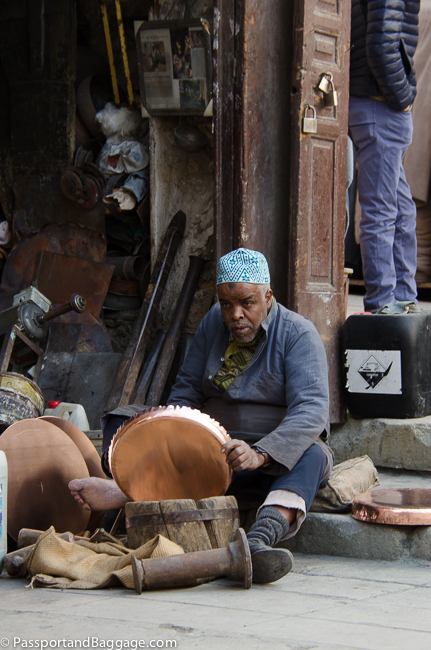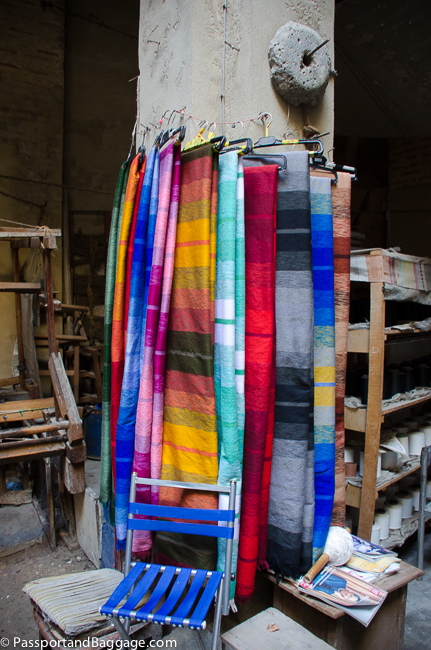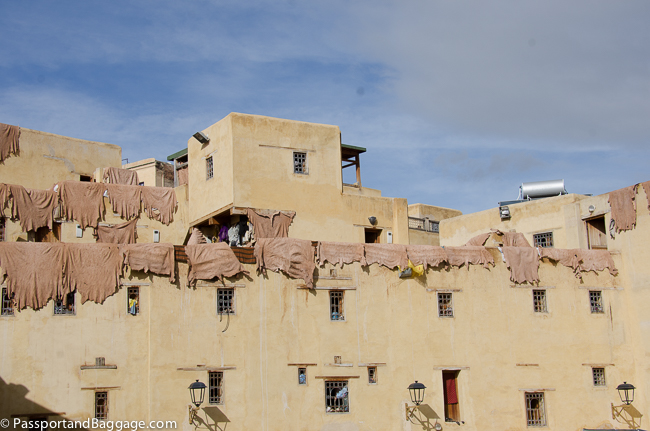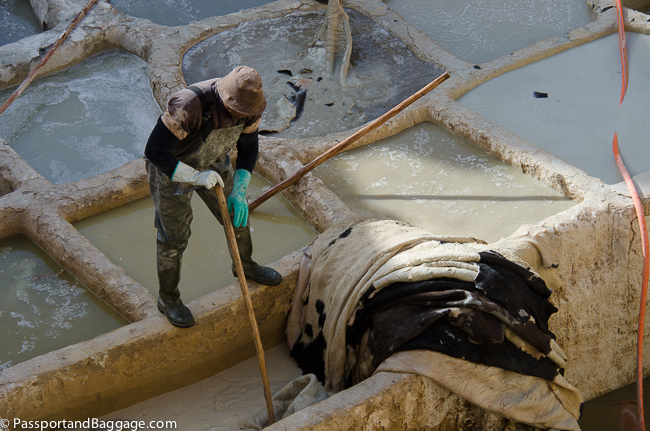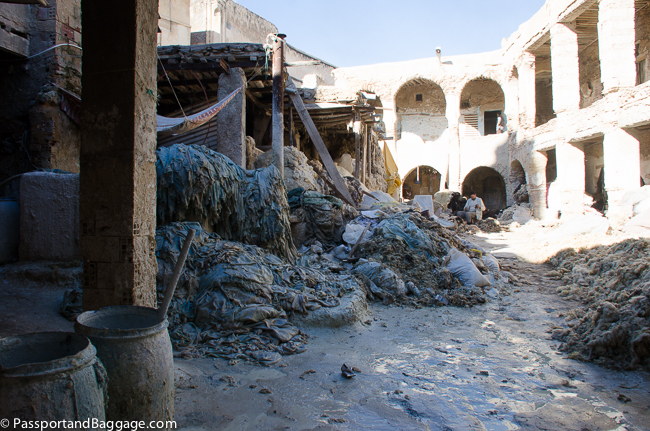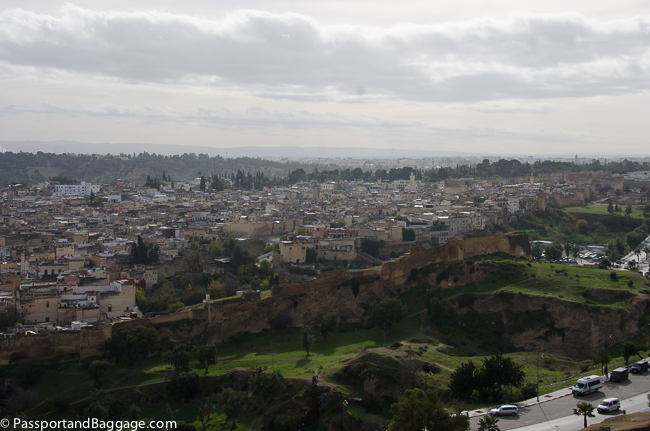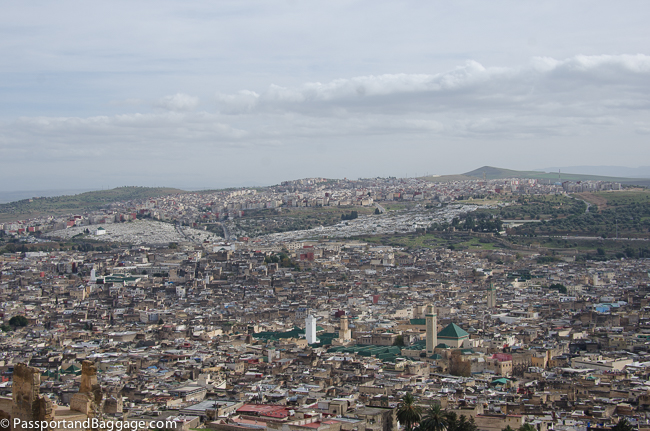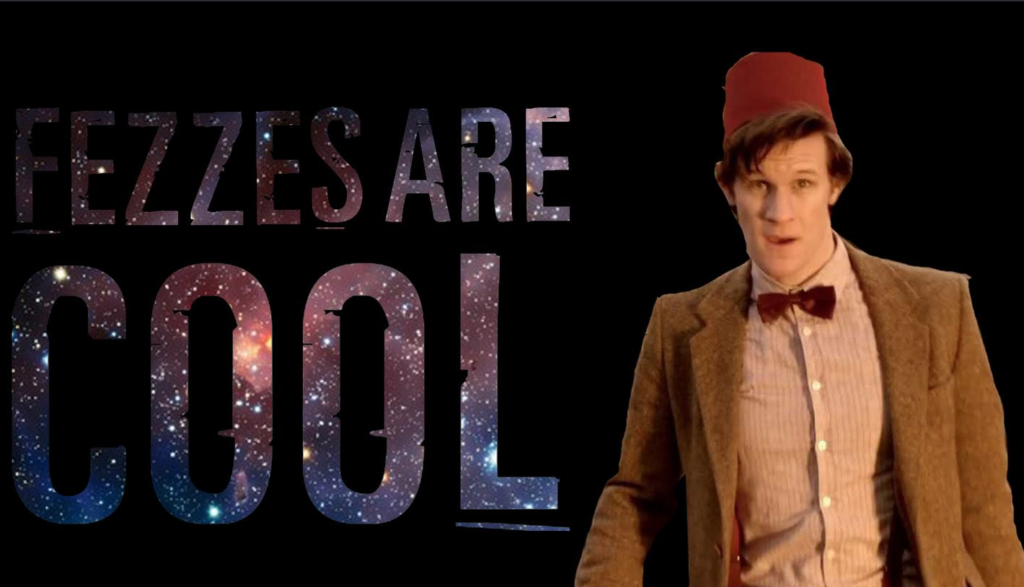December 19, 2019
Fes (Fez) overwhelms when you are 10 miles out. There are over 1.4 million people living in this, the second-largest city of Morocco.
The city consists of two old medina quarters, Fes el Bali (old) (808CE) and Fes Jdid (new)(1276CE), Ville Nouvelle constructed during the French colonial era and then the sprawling suburban area outside of those three centers. The medina of Fez is listed as a World Heritage Site and is the oldest medieval city in the world and is believed to be one of the world’s largest urban pedestrian zones (car-free).
This post is all about the buildings inside the Medina. The Medina is a living structure with over 200,000 people living inside of the walls. This means they do their shopping and dining, but they also go to school, pray and work here.
The best way to begin a trip to the medina is through the famous Bab Boujloud or Blue Gate. Built as late as 1913, this gateway into the heart of the Fez medina was actually designed and completed during the French occupation of Morocco.
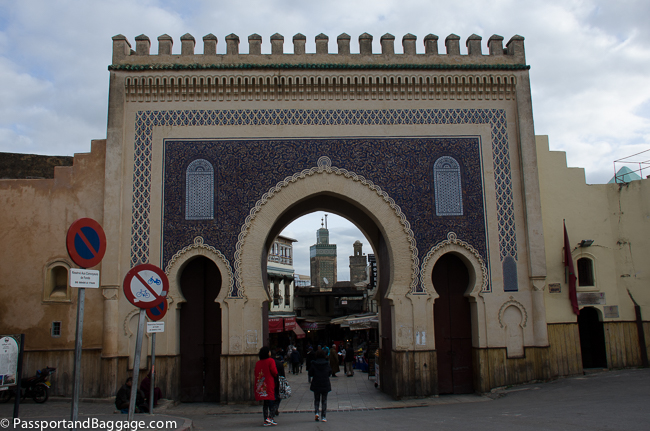
The structure is a triple-arched gate that makes use of Moorish architectural forms, with pointed horseshoe arches and a crenelated top. Both the inner and outer facades are covered in tiles featuring the classic Moroccon designs of arabesques and geometric patterns. The outer facade is predominantly blue and the interior facade predominantly green-ish.
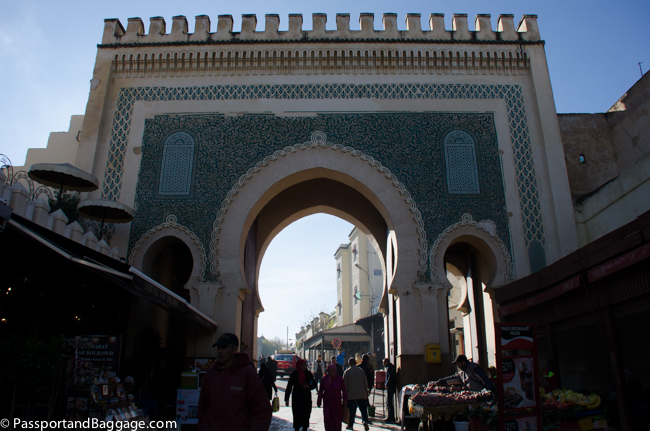
The actual doors of the gate seem to close and lock from the outside; perhaps an indication that the French administration saw it partly as a means of controlling the movement of the inhabitants inside the medina?
Not far from the Blue Gate, but not easy to find in the maze of narrow streets, is a water clock.
Built in 1357, the clock consists of 12 windows and 12 platforms holding brass bowls. The motion of the clock was presumably maintained by a kind of small cart that ran from left to right behind the twelve doors. At one end, the cart was attached to a rope with a hanging weight; at the other end to a rope with a weight that floated on the surface of a water reservoir that was drained at a regular pace. Each hour one of the doors opened; at the same time, a metal ball was dropped into one of the twelve brass bowls. The rafters sticking out of the building above the doors supported a small roof to shield the doors and bowls.
Here is a grainy historical photo of the clock:
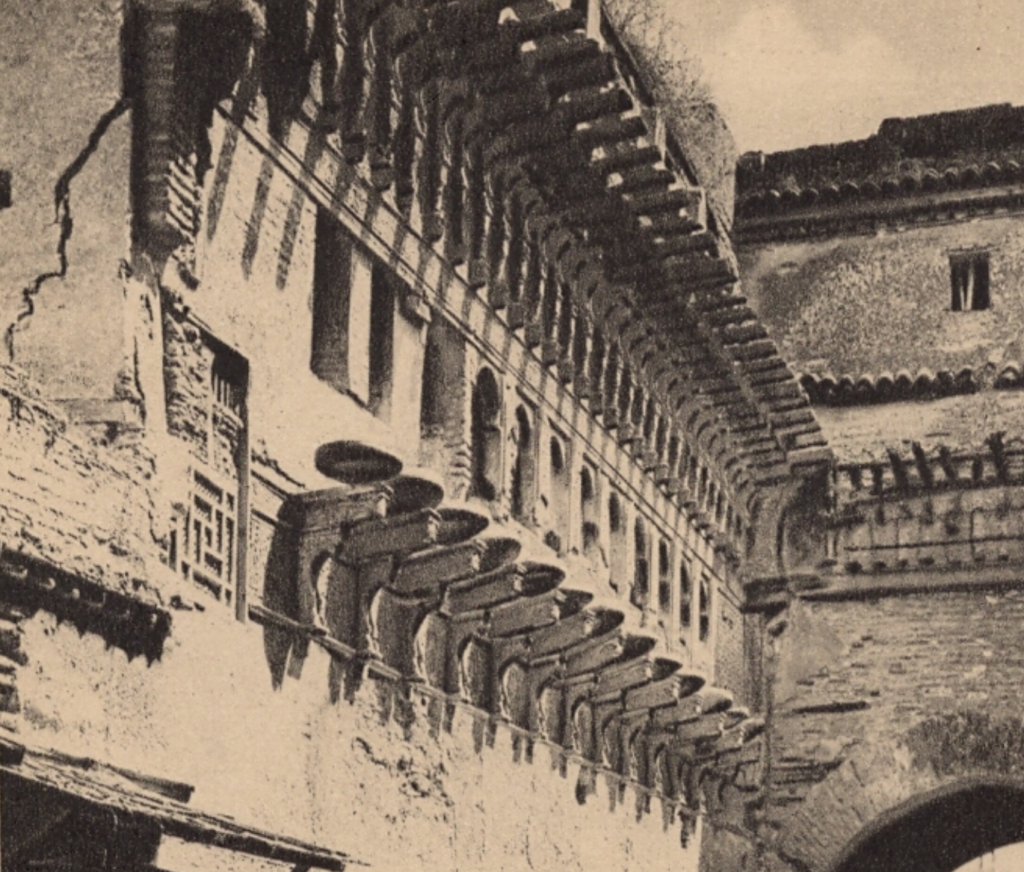
The bowls were removed in 2004 and the clock mechanism is being reconstructed by ADER, a foundation for the reconstruction of monuments in Fes.
Across from the water-clock is the Bou Inania Madrassa.
Founded in 1351–56 the madrassa (or medersa) is considered one of the best examples of Marinid architecture and is the only madrasa in Fes with a minaret. The Marinid dynasty was an Arabized Berber dynasty formed in 1244 and the 4th Arab dynasty of Morocco.
According to history, religious leaders of the Karaouine Mosque advised Abu Inan Faris to build this madrasa. It was the last madrasa to be built by the Marinids.
The madrasa was renovated in the 18th century. In the 20th century, major restoration work was performed on the load-bearing structure, the plaster, wood, and tile.
The madrasa is one of the few religious places in Morocco that is accessible for non-Islamic visitors.
The Museum of Wood is in the Fondouk Nejjarine, originally built in the 18th century as a caravanserai. These types of buildings were typically built in a square or rectangular shape around an inner courtyard, usually with a fountain in the middle.
This is one of the more spectacular caravanserais I have ever seen. You enter through a monumental gate leading to a central courtyard or sahn. The rectangular courtyard is surrounded by a three-story gallery. The rooms for the guests were located on the upper floors. At the beginning of the 20th century, the fondouk was used as a police station by the French colonial authority. The building was restored between 1990 and 1996.
At this point, one would be terribly lost. I hired a guide for my first day in the Medina. I do not think I would have, but the woman that manages the Riad where I am staying strongly suggested I do. She found me a certified and knowledgeable guide. She was right, I needed a guide, I would never have found half of these places without him.
Fez, and the Moroccon state, was begun by Moulay Idriss I, his son Moulay Idriss II continued his legacy. This is the tomb of the son.
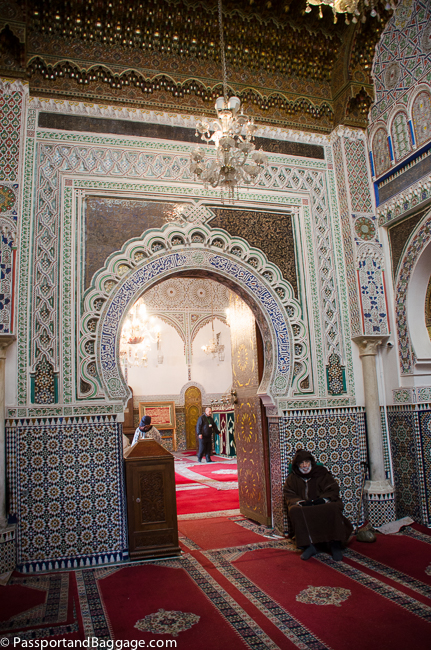
The Zaouia of Moulay Idriss II is a zawiya (a shrine and religious complex; also spelled zaouia). It contains the remains of Moulay Idriss II the son of the founder of Islam in Morocco.
Going around a few more corners you enter into a part of the medina that has been completely restored. It burned in the 1950s and was restored then, but it has undergone another complete restoration bringing into the modern age. I even saw a gentleman insert a key and watch his metal storefront roll up and he was open for business.
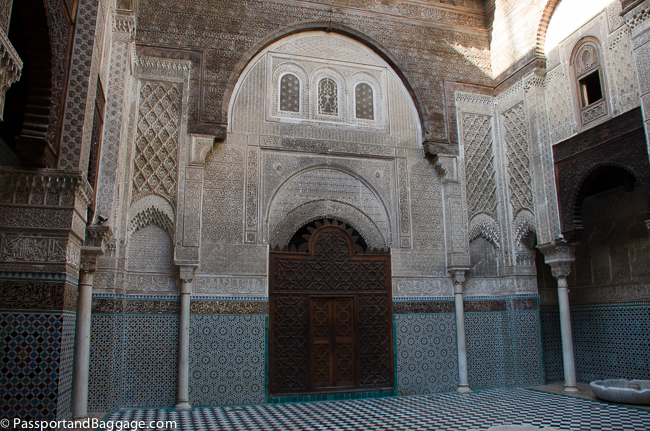
Another beautiful madrassa in the Medina is The Al-Attarine Madrasa. It was built by the Marinid sultan Uthman II Abu Said in 1323-5. The madrasa takes its name from the Souk al-Attarine, the spice, and perfume market.
The interior of the Al-Attarine Madrasa is very similar to the Bou Inania Madrasa, however, this one still has its interior fountain.
Around a few more corners is Al-Karaouine.

Al-Karaouine, is the oldest existing, continually operating higher educational institution in the world according to UNESCO and Guinness World Records. It was founded by Fatima al-Fihri in 859 with an associated madrasa, which subsequently became one of the leading spiritual and educational centers of the historic Muslim world. It was incorporated into Morocco’s modern state university system in 1963. As it is a mosque, non-believers can only take a photo from the open door.
Walking down a few more narrow streets you pop out into a lovely open-air plaza, the Place Serffarine. You can not miss it, long before you arrive you will hear the sound of the copper beaters pounding away.
A UNESCO protected trade is weaving and can be found deep in the Medina. A word of warning. The sales pitch here is that the silk is from the Agave plant. I honestly believe that the people that are working in the weaving sites believe this to be true. However, what they are actually purchasing is Rayon. Please read this article before buying Agave Silk items from Morocco. They also do some beautiful work in wool and cotton, so don’t skip the weavers just because of their “silk”.
Each neighborhood has its own baker, I was told this was to keep the chance of fires breaking out to a minimum. The women make their own bread at home and then bring it to the central baker for baking.
The largest tourist attraction of the Fez Medina is the Chouara Tannery.
The Chouara Tannery is one of the three tanneries in the city. Built in the 11th century, it is the largest tannery in the city. The tanning industry has been continually operating in the same fashion since its inception.
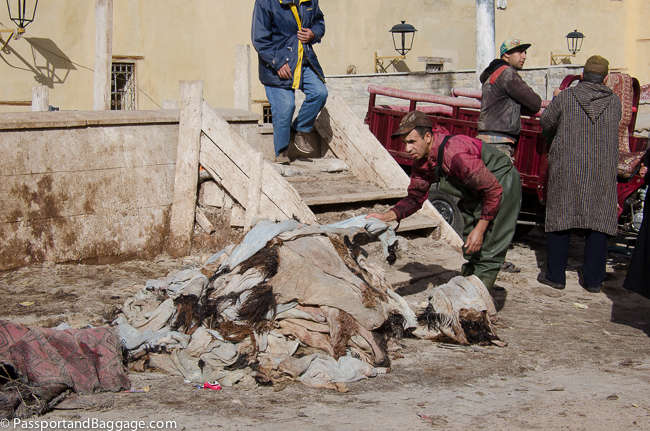
The choosing of the skins normally takes place early in the morning. These were goat skins dropped off in the afternoon
Hides of cows, sheep, goats, and camels are processed by first soaking in a series of the white liquids – made from various mixtures of cow urine, pigeon feces, quicklime, salt, and water – in order to clean and soften the tough skins. This process takes two to three days.
They are then soaked in a dye made from natural ingredients such as poppy for red, indigo for blue, and henna for orange. After the dyeing, they are dried under the sun.
The two other tanneries are deep inside the Medina.
This is just a sampling of what Medina has to offer. Here are some statistics to help with understanding why this place takes days if not years to navigate and understand.
These are the statistics for Fez el Bali, the old part of the Medina they do not include Fez Jdid, the newer portion, which I was unable to find.
Area: 220 ha (UNESCO data) – 0.849425 square miles for us not on the metric system.
Population: 300,000 inhabitants in 1980 / 200,000 in 1993 / 156,000 in 2002
Population Density: 136,363 inhabitants / km2 in 1980 / 90,000 in 1993 / 71,000 in 2002
Number of businesses: 5,330 (artisans workshops) making up for 42% of the total workshops in the Fes municipality (2005 data by Al Akhawayn University. The Chambre d’Artisanat de Fes could not provide data!).
Craftmanship: source of income of 75% of the medina population. Textile and leather employs more than 67% of the regional workforce
Revenue: estimated $1.1 billion a year (based on figures provided by Invest in Morroco)
Number of tourists/year: 350,000 (2006 data by Observatoire du Tourism)
Tourists/Year growth rate: 9% (data Observatoire du Tourism)
I do not think it possible to post enough photos to show how overwhelmingly large Fez is.
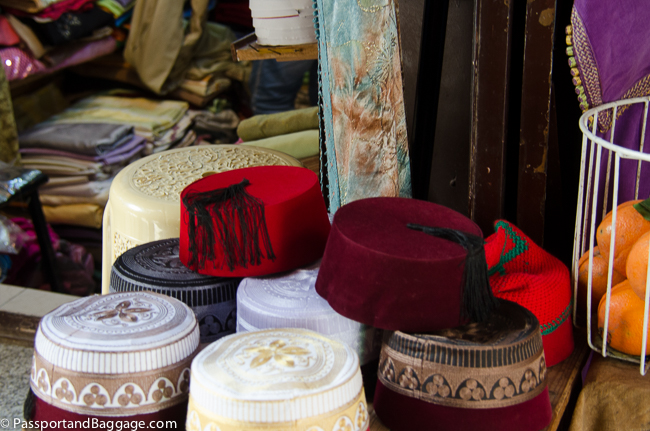
Did you know that the name for the “fez” hat comes from the city of Fez? Morocco produced the dye, made from crimson berries to color the hat.
And yes:
